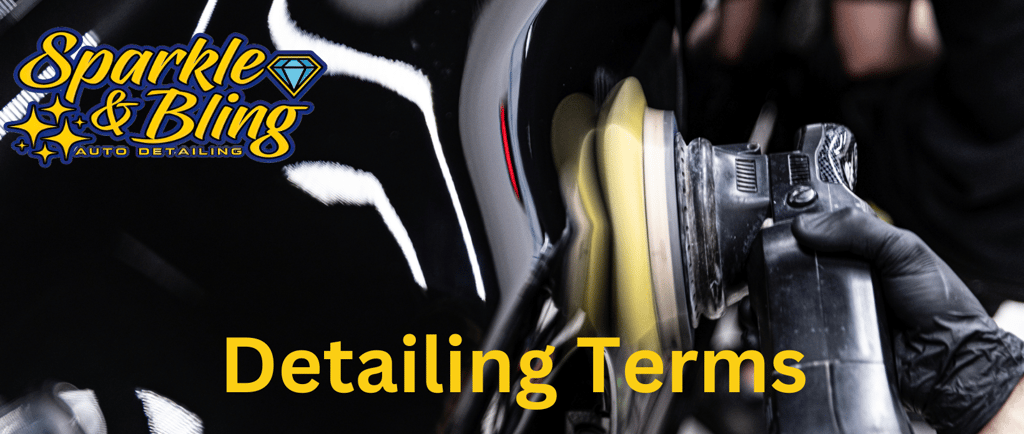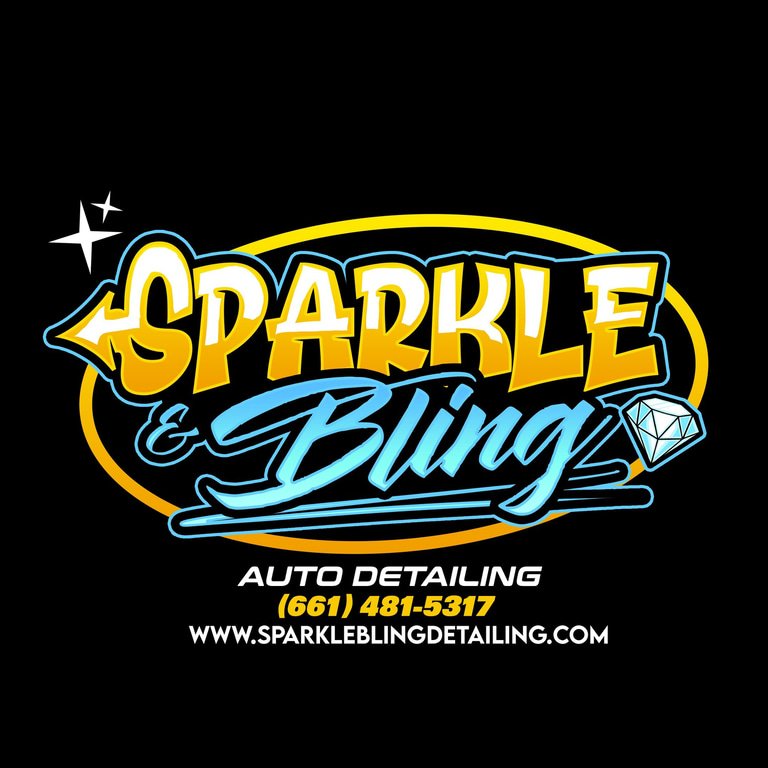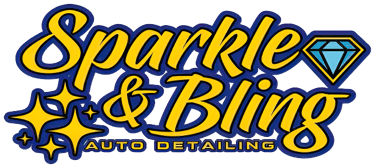Common Detailing Terms Defined: A Comprehensive Glossary
Get to know the essential terminology used in the world of car detailing, from "claying" to "swirl marks," and become a more informed car owner.
Sparkle and Bling
9/22/20232 min read


Car detailing involves a unique vocabulary to describe various techniques, products, and processes. If you're new to the world of detailing, understanding these terms can help you communicate effectively with professionals and make informed decisions about your car's care. In this blog, we'll provide a comprehensive glossary of common detailing terms to get you started.
1. Claying:
Claying is a process that involves using a clay bar or clay mitt to remove embedded contaminants and create a smooth surface on the car's paint.
2. Polishing:
Polishing is the act of using abrasive compounds and machines to remove minor imperfections like swirl marks and scratches from the paint, enhancing its clarity and gloss.
3. Wax:
Wax is a protective product applied to the car's paint to create a glossy finish and provide a limited level of protection from environmental elements.
4. Sealant:
Sealant is a synthetic product that provides longer-lasting protection for the car's paint compared to wax. It forms a protective barrier against UV rays, contaminants, and oxidation.
5. Ceramic Coating:
Ceramic coating is a liquid polymer applied to the paint surface that chemically bonds to create a durable and hydrophobic protective layer. It offers superior protection and longevity.
6. Hydrophobic:
Hydrophobic refers to a surface's ability to repel water. Hydrophobic coatings cause water to bead up and roll off, reducing water spots and making the car easier to clean.
7. Decontamination:
Decontamination is the process of removing contaminants like tar, tree sap, and industrial fallout from the car's paint.
8. Swirl Marks:
Swirl marks are fine, circular scratches on the car's paint caused by improper washing or buffing techniques. They can detract from the paint's appearance.
9. Detailer's Clay:
Detailer's clay is a putty-like substance used to remove contaminants from the paint's surface. It comes in various levels of aggressiveness.
10. Compound:
Compound is a type of abrasive product used during paint correction to remove deeper scratches and imperfections before polishing.
11. Tire Dressing:
Tire dressing is a product applied to the sidewalls of tires to enhance their appearance, giving them a glossy or matte finish.
12. Interior Detailing:
Interior detailing involves cleaning and rejuvenating the interior surfaces of the car, including seats, dashboard, carpets, and trim.
13. Degreaser:
Degreaser is a cleaning product used to remove grease, oil, and heavy dirt from surfaces like the engine bay.
14. UV Protection:
UV protection refers to products and coatings that shield the car's surfaces from the damaging effects of ultraviolet rays from the sun.
15. Oxidation:
Oxidation is the process where oxygen reacts with surfaces, causing fading, discoloration, and degradation, particularly noticeable on paint and plastics.
By familiarizing yourself with these common detailing terms, you'll be better equipped to discuss your car's care with professionals and understand the processes involved in keeping it looking its best. Whether you're seeking a basic wash or a comprehensive detailing service, this knowledge will help you make informed decisions about maintaining your vehicle's beauty.


